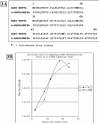Analysis of intraviral protein-protein interactions of the SARS coronavirus ORFeome
- PMID: 17520018
- PMCID: PMC1868897
- DOI: 10.1371/journal.pone.0000459
Analysis of intraviral protein-protein interactions of the SARS coronavirus ORFeome
Abstract
The severe acute respiratory syndrome coronavirus (SARS-CoV) genome is predicted to encode 14 functional open reading frames, leading to the expression of up to 30 structural and non-structural protein products. The functions of a large number of viral ORFs are poorly understood or unknown. In order to gain more insight into functions and modes of action and interaction of the different proteins, we cloned the viral ORFeome and performed a genome-wide analysis for intraviral protein interactions and for intracellular localization. 900 pairwise interactions were tested by yeast-two-hybrid matrix analysis, and more than 65 positive non-redundant interactions, including six self interactions, were identified. About 38% of interactions were subsequently confirmed by CoIP in mammalian cells. Nsp2, nsp8 and ORF9b showed a wide range of interactions with other viral proteins. Nsp8 interacts with replicase proteins nsp2, nsp5, nsp6, nsp7, nsp8, nsp9, nsp12, nsp13 and nsp14, indicating a crucial role as a major player within the replication complex machinery. It was shown by others that nsp8 is essential for viral replication in vitro, whereas nsp2 is not. We show that also accessory protein ORF9b does not play a pivotal role for viral replication, as it can be deleted from the virus displaying normal plaque sizes and growth characteristics in Vero cells. However, it can be expected to be important for the virus-host interplay and for pathogenicity, due to its large number of interactions, by enhancing the global stability of the SARS proteome network, or play some unrealized role in regulating protein-protein interactions. The interactions identified provide valuable material for future studies.
Conflict of interest statement
Figures





References
-
- Ksiazek TG, Erdman D, Goldsmith CS, Zaki SR, Peret T, et al. A novel coronavirus associated with severe acute respiratory syndrome. N Engl J Med. 2003;348:1953–1966. - PubMed
-
- Drosten C, Gunther S, Preiser W, van der WS, Brodt HR, et al. Identification of a novel coronavirus in patients with severe acute respiratory syndrome. N Engl J Med. 2003;348:1967–1976. - PubMed
-
- Marra MA, Jones SJ, Astell CR, Holt RA, Brooks-Wilson A, et al. The Genome sequence of the SARS-associated coronavirus. Science. 2003;300:1399–1404. - PubMed
-
- Rota PA, Oberste MS, Monroe SS, Nix WA, Campagnoli R, et al. Characterization of a novel coronavirus associated with severe acute respiratory syndrome. Science. 2003;300:1394–1399. - PubMed
Publication types
MeSH terms
Substances
Grants and funding
LinkOut - more resources
Full Text Sources
Other Literature Sources
Molecular Biology Databases
Miscellaneous

